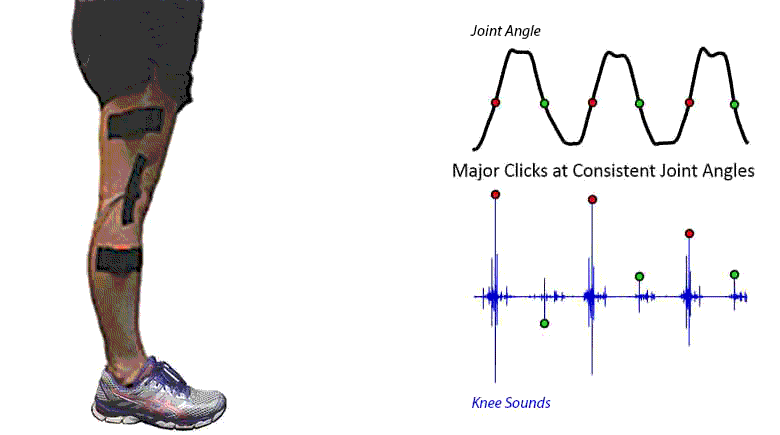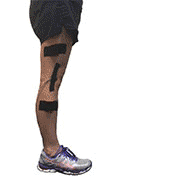Caitlin N. Teague, Sinan Hersek, Hakan Töreyin, Mindy L. Millard-Stafford, Michael L. Jones, Geza F. Kogler, Michael N. Sawka, and Omer T. Inan, Georgia Institute of Technology, USA
The research reported in this paper was highlighted in several major news pieces including Scientific American and BBC Radio.

We present the framework for wearable joint rehabilitation assessment following acute knee injury based on the measurement of acoustical emissions from the knee with miniature microphones. The knee is one of the most frequently injured parts of the body. Additionally, knee injuries are among the most severe in terms of time of restricted and / or total loss of participation among athletes, military personnel, and other populations engaged in high performance activities. Providing quantitative and objective feedback regarding knee health during rehabilitation could potentially provide a decision aid to millions of Americans with knee injuries; specifically, features of the acoustical emission signatures could be used to automatically determine which activities or intensities of activities are safe to perform at a given time during the recovery process. In this paper, we compare three different types of miniature microphones to determine which can provide high quality, robust joint acoustical emission measurements: electret, micro-electromechanical systems (MEMS), and piezoelectric film contact microphones. We found that the electret and MEMS microphones provided the best signal-to-noise-and-interference ratio and that the inexpensive (< $5) MEMS microphone was comparable in quality to the several hundred dollar electret. Furthermore, we found that the acoustical emissions occurred at similar joint angles for all of the subjects and that the angular locations of the main emissions were similar between the right and left legs. This work can enable, for the first time, wearable sensing of knee joint acoustical emissions for longitudinal monitoring of in-depth knee joint health parameters for patients rehabilitating an acute knee injury.
Keywords: wearable sensing, biomechanics, acute knee injury, rehabilitation engineering
Research web page: http://irl.gatech.edu

